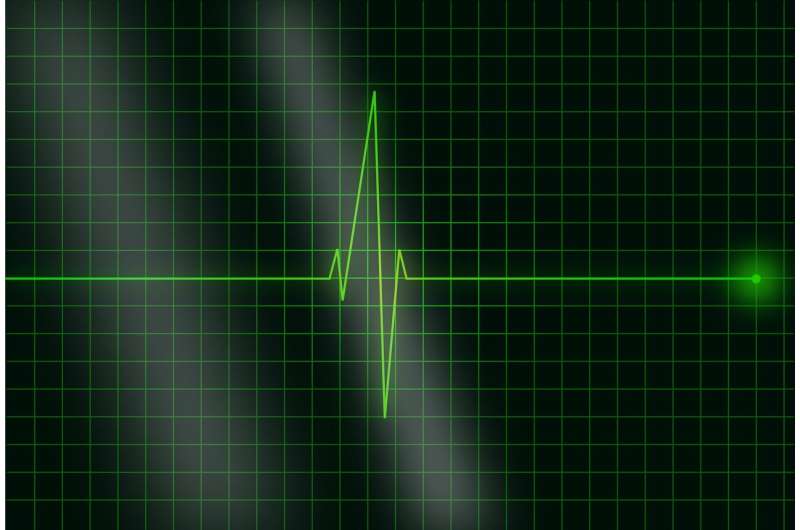
Low-value health care is common and expensive for individuals and society, accounting for up to 30% – as much as $101 billion annually—of health care spending in the U.S. The current scope and impact of low-value cardiovascular care is reviewed in a new American Heart Association Scientific Statement, published today in the Association’s journal Circulation: Cardiovascular Quality and Outcomes. The statement proposes solutions to reduce low-value cardiovascular care and areas for future research priorities. An American Heart Association Scientific Statement is an expert analysis of current research and may inform future guidelines.
Low-value health care is a medical test, treatment or procedure that provides no ‘net benefit’ when weighing the health benefits (such as symptom relief) with the potential to cause harm (overall risks including potential complications); the cost of the test, procedure or treatment; and whether similar benefits may be available in alternate forms of care. Nearly 50% of patients in the U.S. will receive at least one low-value test or procedure per year. Prior research and a report from the National Academy of Medicine estimate that approximately $76-101 billion of annual health care spending in the U.S. may be considered unnecessary or wasteful. Cardiovascular care may be prone to a high frequency of low-value tests and procedures.
“Cardiovascular disease is common and can present suddenly, such as a heart attack or abnormal heart rhythm,” said Vinay Kini, M.D., M.S.H.P., chair of the statement writing group and assistant professor of medicine at Weill Cornell Medical College in New York. “Our desire to be vigilant about treating and preventing cardiovascular disease may sometimes lead to use of tests and procedures where the benefits to patients may be uncertain. This may impose burdens on patients, in the form of increased risk of physical harm from the low-value procedure or potential complications, as well as follow-up care and out-of-pocket financial costs.”
Screening and diagnostic tests remain valuable and informative in guiding treatment for people with established cardiovascular disease. However, overuse of some cardiac tests may occur since they are widely available, may be financially beneficial to the health care center, and are usually low risk for patients.
Studies have found that up to 1 in 5 echocardiograms and up to half of all stress tests performed in the U.S. may be rated as rarely appropriate, based on established guidelines for their use. An example of inappropriate stress testing is when a patient who has had a stent or bypass surgery gets a yearly stress test despite feeling well and not having any symptoms to warrant the test. These tests may lead to more invasive tests that may also have higher risks to patients, in addition to increased costs to the patient and health care system, as well as higher stress or anxiety for patients.
Unnecessary testing and procedures also present added health risks for patients, such as exposure to radiation and hospital-acquired infections. In the U.S., up to 15% of percutaneous coronary interventions (PCIs), where a stent is placed in the blocked artery via a catheter inserted in the wrist or thigh, are classified as rarely appropriate. “Some patients who have these procedures may benefit equally from being treated with medications,” said Kini.
“Cardiovascular disease treatment and management is a rapidly changing field of medicine where new and innovative tests and treatments are always being developed. Medical advances are important, however, sometimes the rapid pace of innovation outpaces our understanding of how best to use the new tests and treatments.”
The rapidly expanding consumer device industry is another factor in driving up costs with little benefit to patients. Some of the devices that monitor heart rate and physical activity also evaluate heart rhythms, yet more than one-third of these recordings may be subject to misinterpretation by clinicians and patients.
The writing group conducted a thorough review of the medical and economic literature on low-value health care published since 2000 to describe the scope of low-value care in the U.S. Several existing options for reducing low-value cardiovascular care are detailed:
- For patients: Patient education and shared decision-making may help reduce low-value care. These approaches may also be most useful when misconceptions exist about the intended purpose of a test or treatment.
- For professionals: A “layered” approach to reducing low-value care may be most effective, such as through education, audit and feedback, and behavioral science tools (“nudges”) to shift behaviors and practices, for example—defaulting to generic rather than brand name medication use.
- For payers and policy leaders: Interventions to reduce low-value care include national insurance coverage determinations; prior authorization, which involves obtaining insurance approval for certain tests and treatments; alternative payment models that reward lower costs and higher quality health care; value-based insurance designs that financially penalize low-value care; and medical liability reform to reduce defensive medical practices.
Low-value health care is a complex problem. Achieving meaningful reductions in low-value cardiovascular care requires a multi-disciplinary approach that includes continuous research, implementation, evaluation and adjustment, while ensuring equitable access to care.
“Each approach has benefits and drawbacks,” Kini said. “For example, prior authorization imposes a large burden on health care professionals to obtain insurance approval for tests and treatments. Prior authorization and some value-based payment models may unintentionally worsen existing racial and ethnic healthcare disparities. A one-size-fits-all approach to reducing low-value care is unlikely to succeed; rather, acting through multiple perspectives and frequently measuring impacts and potential unintended consequences is critical.”
Source: Read Full Article
